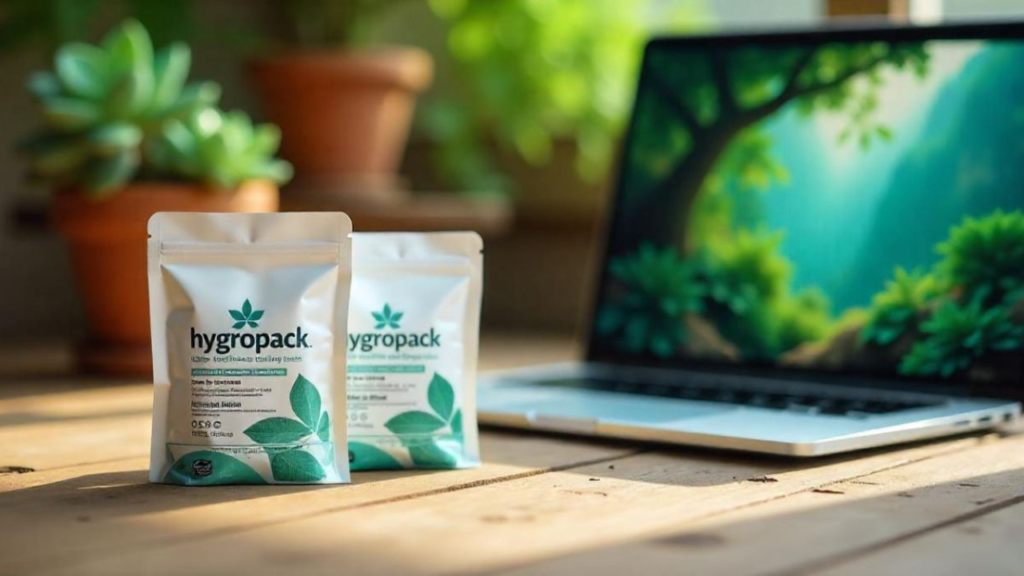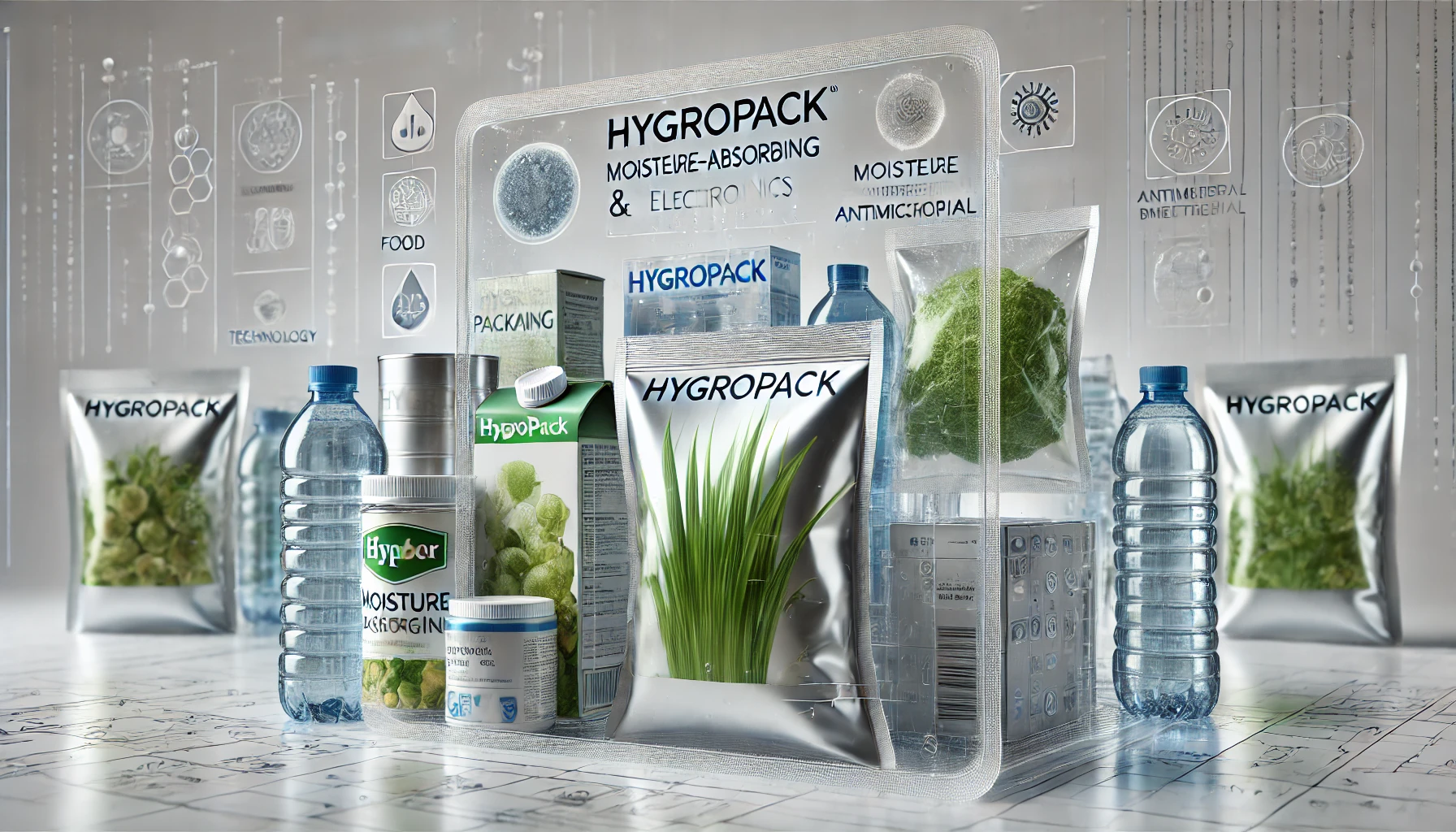Hygropack’s rapidly evolving world, sustainability, safety, and convenience are critical for consumers and businesses. Packaging plays a pivotal role in this, especially when it comes to ensuring product freshness, safety, and environmental responsibility. Among the newest advancements in the packaging industry is Hygropack – a revolutionary technology transforming the way goods are packaged and transported.
Hygropack is more than just a packaging material; it’s an innovation that focuses on hygiene, moisture control, and enhanced product preservation. This advanced packaging solution is making waves across various industries, from food packaging to pharmaceuticals. In this article, we will explore how Hygropack is revolutionizing the packaging industry, its key features, benefits, and applications, and why it is gaining momentum as an essential component of modern packaging solutions.
What is Hygropack?
Hygropack is a specialized packaging technology integrating moisture control and antimicrobial properties into packaging materials. It is designed to maintain product quality by regulating humidity levels inside the packaging, preventing moisture damage, mold growth, and bacterial contamination. Hygropack technology uses unique, moisture-absorbing materials combined with antimicrobial coatings or additives to create a barrier that helps preserve products in optimal conditions during storage and transit.
This type of packaging is particularly beneficial for moisture-sensitive products, such as food, pharmaceuticals, electronics, and even textiles. Hygropack packaging can significantly reduce spoilage, extend shelf life, and ensure that products remain fresh and safe for consumers. It is an essential tool for industries dealing with perishable goods, offering a solution to maintaining product integrity during distribution.
How Hygropack Works

Hygropack technology works through a combination of moisture regulation and antimicrobial properties. The packaging material is designed to absorb excess moisture from the environment, thus reducing the risk of mold, fungi, and bacterial growth. Additionally, the antimicrobial properties of the packaging material help prevent the development of harmful microorganisms that could compromise product safety and quality.
The packaging is often made from high-performance films, papers, or laminates infused with hygroscopic materials (substances that attract and retain water) and antimicrobial agents. These materials create an ideal micro-environment inside the package by controlling humidity levels and preventing contamination. Hygropack is a versatile solution that can be applied to various types of packaging, including vacuum-sealed bags, pouches, boxes, and even blister packs.
Key Benefits of Hygropack
1. Extended Shelf Life and Freshness
One of Hygropack’s most significant advantages is its ability to extend product shelf life. The moisture-absorbing materials inside Hygropack packaging help control humidity, preventing products from becoming soggy, moldy, or deteriorating due to excess moisture. This is especially crucial for food products such as snacks, meat, cheese, and baked goods, which are highly susceptible to moisture damage.
By keeping the product dry and free from moisture-related contamination, Hygropack ensures that the product remains fresh for extended periods, reducing food waste and increasing consumer satisfaction.
2. Enhanced Product Safety
Hygropack’s antimicrobial properties provide an added layer of protection against harmful microorganisms. The packaging inhibits the growth of bacteria, mold, and fungi that can compromise product safety. This is particularly important in pharmaceutical industries, where maintaining sterile conditions is essential.
In the case of sensitive products like medicines and supplements, Hygropack prevents contamination, ensuring that the product remains safe and effective until it reaches the consumer. This safety feature is also beneficial for electronic products, which can be damaged by moisture and bacteria.
3. Sustainability and Eco-Friendly Design
Hygropack is also a step forward in sustainable packaging. The materials used in Hygropack packaging are designed to be eco-friendly, with many options being recyclable or biodegradable. By using moisture-absorbing and antimicrobial materials that do not require excessive energy or chemicals to produce, Hygropack helps reduce the environmental impact of packaging waste.
In addition, since Hygropack extends product shelf life, it also contributes to reducing food and product waste. This, in turn, supports sustainability goals by minimizing unnecessary disposal of products that would otherwise spoil quickly due to improper packaging.
4. Improved Brand Image
Adopting Hygropack technology shows a brand’s commitment to quality, sustainability, and consumer health. By using packaging that protects the product and offers hygienic and safe storage conditions, businesses can enhance their brand image. Consumers are increasingly aware of the environmental and health impacts of packaging, and using Hygropack can be a selling point that sets a brand apart from its competitors.
Moreover, Hygropack packaging can also improve consumer trust, especially in food and pharmaceutical industries where product safety and hygiene are paramount.
5. Cost-Effectiveness
Though the initial investment in Hygropack materials may be higher than in traditional packaging, the long-term benefits can lead to significant cost savings. Hygropack helps prevent product spoilage, reducing losses caused by damage during transit and storage. Additionally, by extending the shelf life of products, businesses can reduce inventory costs, enhance distribution efficiency, and minimize product returns or recalls.
Applications of Hygropack
1. Food Industry
The food industry is one of the primary sectors benefiting from hybrid technology. Perishable food items like meats, dairy, and baked goods are highly vulnerable to moisture-related spoilage. Hygropack can package these products, keeping them fresh and safe for extended periods. Additionally, Hygropack can be utilized for snack foods, dehydrated foods, and dried fruits, helping them maintain their crispness and flavor.
2. Pharmaceutical Industry
Pharmaceutical products, including tablets, capsules, and injectable medicines, often require specialized packaging to maintain their potency and prevent contamination. Hygropack’s ability to create a controlled environment inside the package helps preserve the integrity of medications by regulating humidity and preventing microbial growth.
3. Electronics and Consumer Goods
Hygropack packaging is also highly beneficial for electronics that are susceptible to moisture damage. Whether mobile phones, computers, or home appliances, Hygropack can protect these sensitive devices from moisture-induced malfunctions, ensuring they arrive at consumers in perfect working condition.
4. Cosmetics and Beauty Products
Cosmetics and beauty products, including skincare, makeup, and fragrances, require packaging that protects them from environmental factors such as humidity and temperature fluctuations. Hygropack ensures that these products remain in optimal condition by maintaining the ideal humidity levels and preventing degradation caused by moisture.
5. Textiles
Textile products such as clothing, linens, and fabrics are prone to mold and mildew when exposed to high humidity. Hygropack can provide moisture-controlled packaging to prevent the growth of fungi and bacteria, ensuring that textiles arrive in pristine condition.
The Future of Hygropack in Packaging
As more industries recognize the benefits of Hygropack technology, its adoption is expected to increase. The growing demand for sustainable packaging solutions, combined with the increasing need for hygienic and safe packaging, makes Hygropack a key player in the future of the packaging industry.
With advancements in material science, we can expect to see even more innovative versions of Hygropack, featuring enhanced moisture control, antimicrobial capabilities, and improved environmental sustainability. These innovations will likely drive further growth in adopting Hygropack across various sectors, particularly in regions where hygiene and sustainability are top priorities.
Conclusion
Hygropack is revolutionizing the packaging industry by providing a highly effective solution to challenges related to moisture control, product preservation, and contamination prevention. From food and pharmaceuticals to electronics and textiles, Hygropack is a game-changer that helps businesses improve product safety, extend shelf life, and reduce environmental impact. As sustainability and hygiene remain top priorities, Hygropack offers an innovative and eco-friendly alternative to traditional packaging solutions, making it an essential tool for businesses looking to stay ahead in an increasingly competitive market.
FAQs
1. What is Hygropack technology?
Hygropack technology integrates moisture control and antimicrobial properties into packaging materials to prevent spoilage, contamination, and moisture damage, ensuring the safe transport and storage of products.
2. How does Hygropack extend the shelf life of products?
Hygropack packaging absorbs excess moisture and prevents the growth of harmful microorganisms, keeping products fresh and safe for extended periods. This is particularly beneficial for perishable goods like food and pharmaceuticals.
3. Can Hygropack be used for food packaging?
Hygropack is highly effective for packaging perishable food such as meats, dairy, baked goods, and snacks. It helps prevent moisture-related spoilage and extends the shelf life of these products.
4. Is Hygropack environmentally friendly?
Hygropack is designed with sustainability in mind. Many Hygropack materials are recyclable or biodegradable, and the technology helps reduce food and product waste by extending shelf life.
5. In which industries is Hygropack used?
Hygropack is used in various industries, including food, pharmaceuticals, electronics, cosmetics, and textiles. It helps protect products from moisture, contamination, and spoilage across these sectors.
You May Also Read: https://ventsweekly.news/blooket-hacks/
